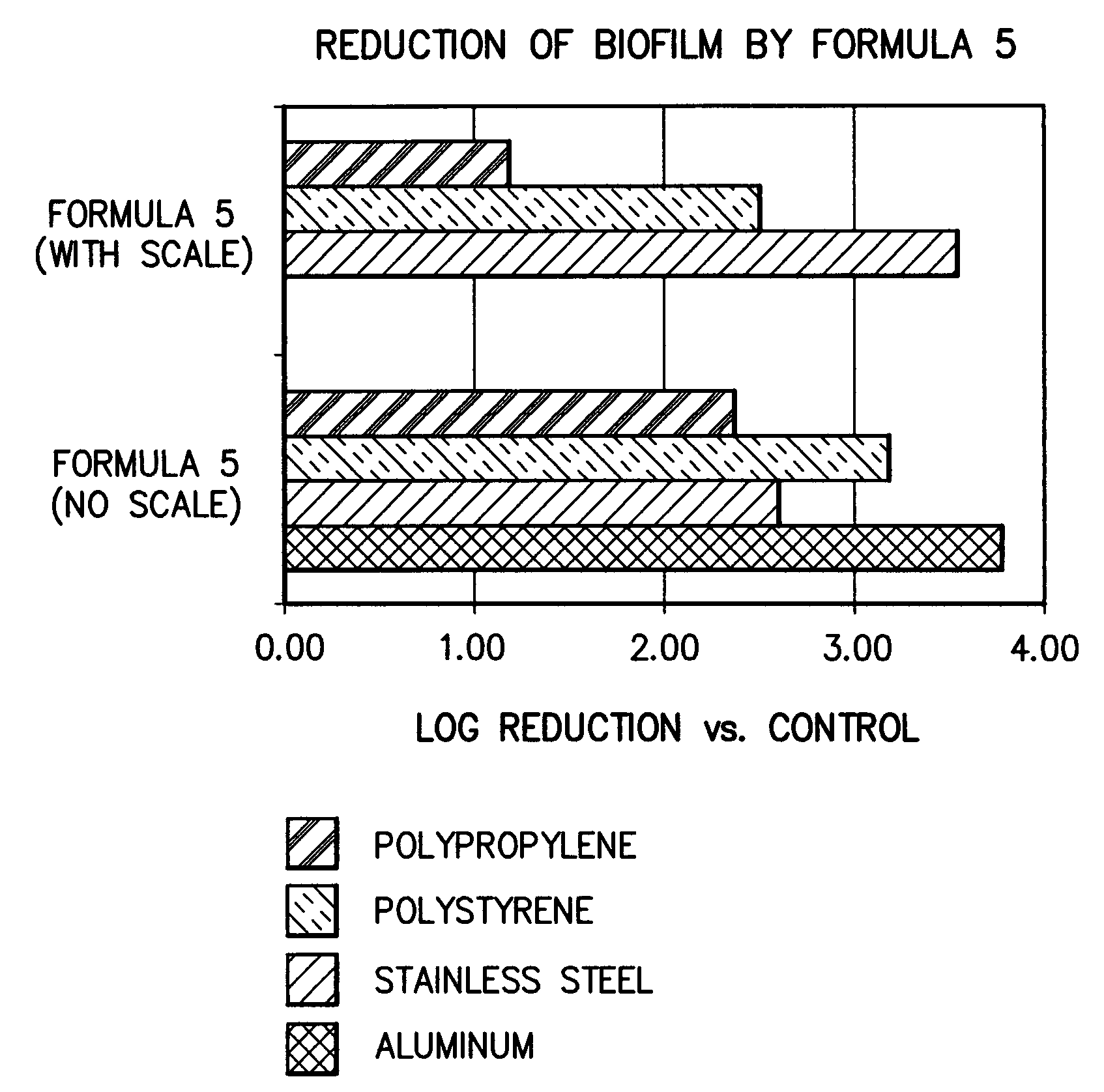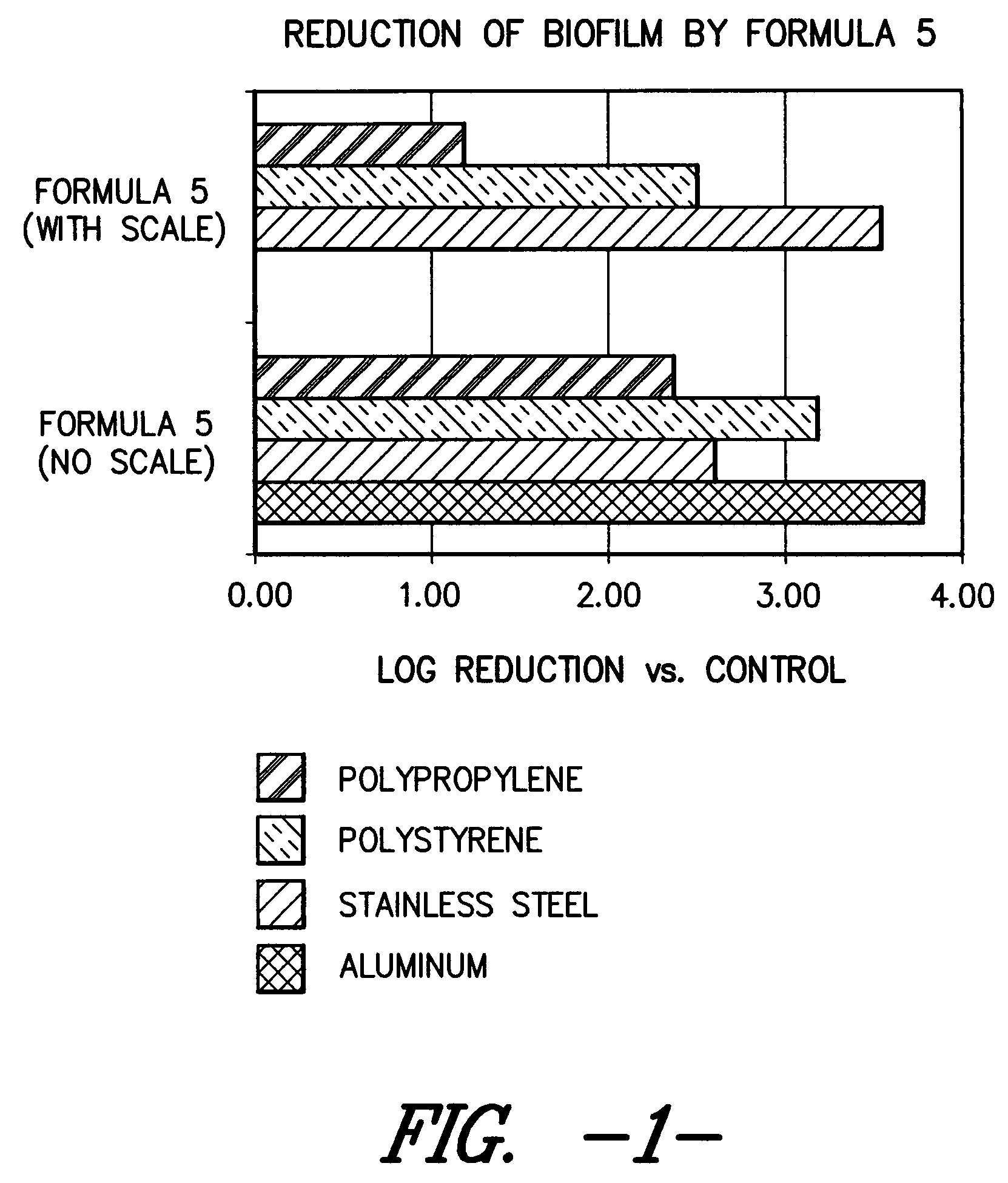Solid cleaning composition and method of use
a technology of cleaning composition and solid cleaning, applied in the direction of detergent powder/flakes/sheets, detergent compounding agents, inorganic non-surface active detergent compositions, etc., can solve the problems of affecting the aesthetic appeal of the surface, affecting the appearance of the surface, and staining the surface to which the microbes attach
- Summary
- Abstract
- Description
- Claims
- Application Information
AI Technical Summary
Benefits of technology
Problems solved by technology
Method used
Image
Examples
examples
[0049]The invention may be further understood by reference to the following examples which are not to be construed as limiting the scope of the present invention.
A. Solid Cleaning Compositions
[0050]The following solid cleaning compositions were prepared. Many of the compositions were tested for various performance parameters such as biofilm removal and odor reduction. The values shown below for the formulations are provided as percent by weight based on the total weight of the solid cleaning composition.
[0051]The powder formulations below were made by dry blending the various ingredients in a tumble blender or by using a kitchen aid style mixer at ambient temperature. When preparing formulations containing effervescence ingredients (e.g. citric acid), the relative humidity of the mixing environment was controlled to as low a level as practically possible.
[0052]The solid tablet formulations were initially prepared in the same manner as the powder formulations. The resultant mixed pow...
PUM
| Property | Measurement | Unit |
|---|---|---|
| weight | aaaaa | aaaaa |
| weight | aaaaa | aaaaa |
| time | aaaaa | aaaaa |
Abstract
Description
Claims
Application Information
 Login to View More
Login to View More - R&D
- Intellectual Property
- Life Sciences
- Materials
- Tech Scout
- Unparalleled Data Quality
- Higher Quality Content
- 60% Fewer Hallucinations
Browse by: Latest US Patents, China's latest patents, Technical Efficacy Thesaurus, Application Domain, Technology Topic, Popular Technical Reports.
© 2025 PatSnap. All rights reserved.Legal|Privacy policy|Modern Slavery Act Transparency Statement|Sitemap|About US| Contact US: help@patsnap.com


